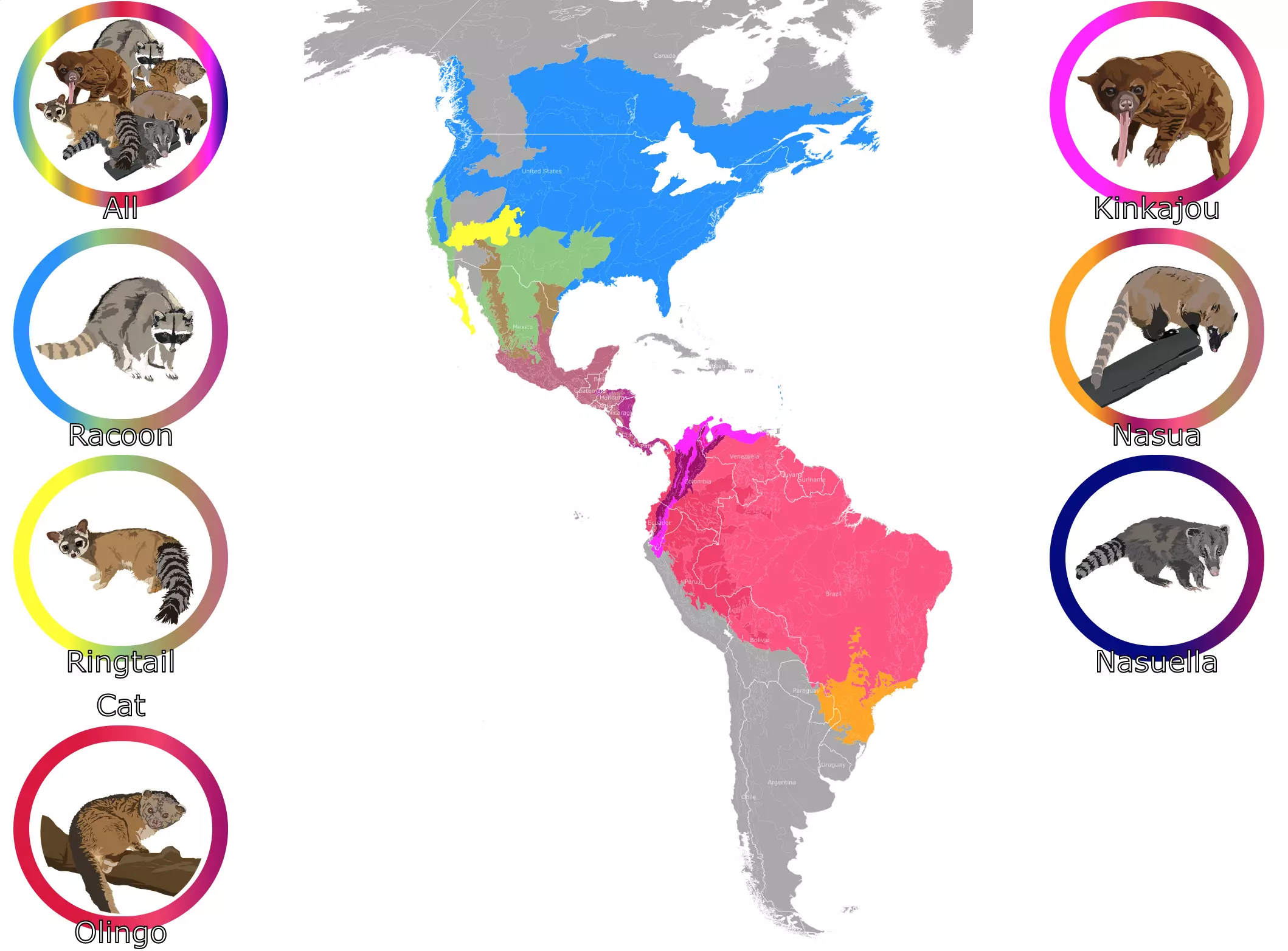Raccoon Family Geographic Range
This map shows the overlapping geographic ranges of the Raccoon family or Procyonidae also known as Procyonidae. The ring around the images has the colors of the different ecoregions, each genus occupies. Due to range overlapping, a single group might have more than one color. Each image is a button that you can select to pick the distribution of a particular genus. Zoom in the map to take a closer look! Hover over, to get the name of the ecoregion. For more information scroll down.
Raccoon Family, Procyonidae
Procynoids are small to medium-sized animals, that live in a wide variety of habitats. Their geographic range is limited to the New World, from Canada to Argentina, as shown on the map.
Their bodies weigh from 2.2lbs to 44lbs (1 Kg to 20 Kg). Some have slender bodies and others have stocky complexions. All Procynoids have medium or long tails.
Their hair or pelage is brown or gray. They sometimes display markings on their face or rings on their tails.
They have short and broad faces, with erect ears.
Procynoids are plantigrade. This means they walk on the soles of their feet, just like bears and humans do.
Procynoids are omnivorous, therefore they consume plants and animals. Their prey is usually insects, small mammals, and birds.
Most are nocturnal and some species are social, living in family groups. Source: Animal Diversity
All members of this family are great climbers, as most of the genus live on trees.
Procynoids are most closely related to the weasel (Mustelidae) and bear (Ursidae) families.
Many species have not been well studied and their populations are not well known.
The Procynoid family belongs to the Order Carnivora. This family includes 14 species and 6 genera, shown in the table below.
| Family | Genus | Common Name | Species |
|---|---|---|---|
| Procyonidae | Procyon | Raccoon (Mapache), Crab-eating raccoon, and Cozumel raccoon | P. lotor, P. cancrivorus, P. pygmaeus |
| Bassariscus | Ring-tailed cat, Cacomistle | B. astutus, B. sumichrasti | |
| Nasua | White-nosed Coati, South American coati or Ring-tailed Coati | N. narica, N. nasua | |
| Nasuella | Mountain coati (Coatí Andino de occidente or Cusumbo) | N. meridensis, N. olivacea | |
| Bassaricyon | Olingos, olinguito | B. alleni, B. gabbii, B. medius, B. neblina | |
| Potos | Kinkajou, Marta | P. flavus |
Raccoons or Procyon
Raccoons' geographic range goes from Canada through the U.S. to Panama. As observed on the map, this range is interrupted by high elevations and arid areas.
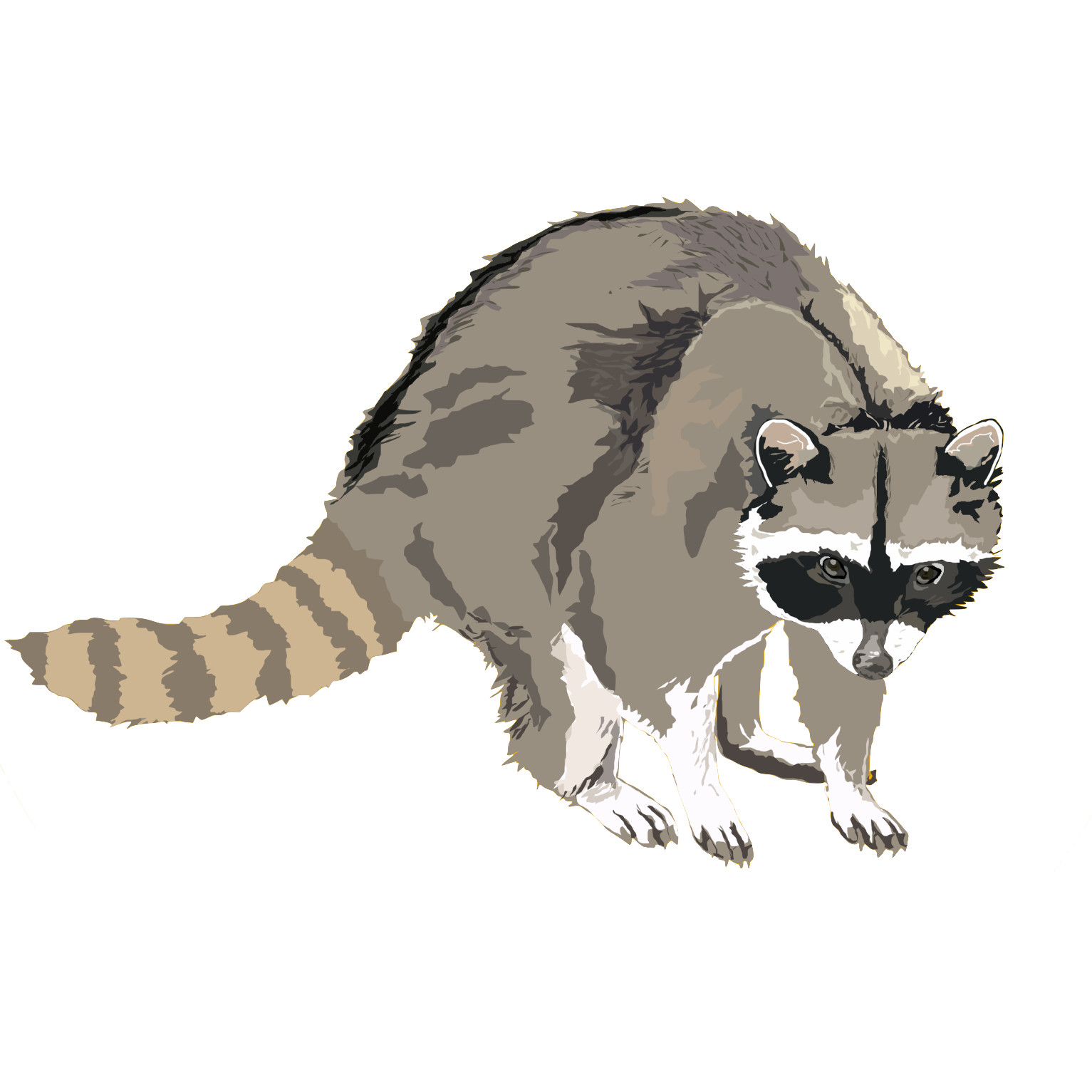
Raccoons were introduced to Europe and Asia where they are invasive species. This extended range is also visible on the map if you zoom out.
Raccoons need a permanent source of water, a small borrow or den, and regular sources of food. Therefore, they prefer wooded areas near streams, ponds, and marshes.
Their homes are in dens or rooms that can be inside maple or elm trees but can also be inside chimneys, sheds, and attics. They have adapted to live near humans in cities and the countryside.
Raccoons are opportunistic omnivores. If there are plenty of food sources they are selective, otherwise, they feed on a large variety of plants and animals.
Some of these foods include berries, nuts, invertebrates, plums, corn acorns, turtles, rodents, young rabbits, snakes, squirrels, worms, and ducks. If raccoons are living close to humans, they will feed on open garbage cans, crops, or chicken coops.
Raccoons have dextrous front paws, that they use to climb trees and manipulate food.
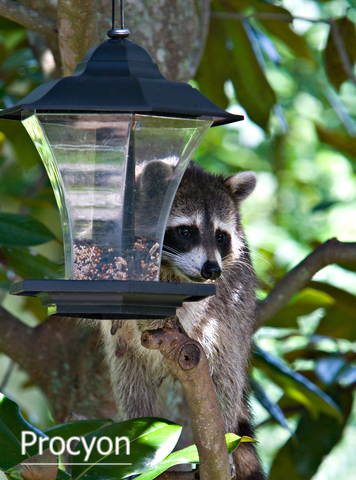
Raccoons have keen senses of hearing, sight, and touch. Their senses of taste and smell are less developed.
Raccoons are nocturnal animals, they are also active at dawn and dusk.
Raccoons are characterized by a black mask that stretches across their eyes. Their body pelage or hair tends to be a mixture of black, gray, and white. They have long feet with five toes and short claws.
Raccoons are also recognized by their heavy ringtail, usually the same length of the body.
Their body length is about 20-40in (0.5-0.1m), their weight is between 8-25 lbs (3.6Kg to 11.5Kg). Females are slightly smaller than males. The University of Wisconsin.
P. lotor lives in North America. P. cancrivorus and P. pygmaeus live closer to the tropics and have smaller sizes.
Raccoons can be fascinating to watch, but interacting with raccoons is not recommended. Raccoons may bite and scratch and transmit Rabies and Roundworm. These are diseases dangerous to humans. In case you get in contact with one, you need to contact your local health department.
Humans are the main cause of incidental death (for example road accidents), but because people hunt them for their skin. Wildlife in Connecticut
Bassariscus: Ring-tailed Cat and Cacomistle
Both species of Bassariscus look like cats and have similar sizes to cats, but are not related to them. They are characterized by a slim body and a long tail with rings.
Bassariscus astutus
The Ring-tailed cat geographic range extends from Southern Oregon and Texas in the U.S., all the way to Oaxaca in Mexico.
They are quite common in the Southwest desert Ringtails are the State Animal of Arizona. Their range elevation is from 0-9,500ft (0-2900m)
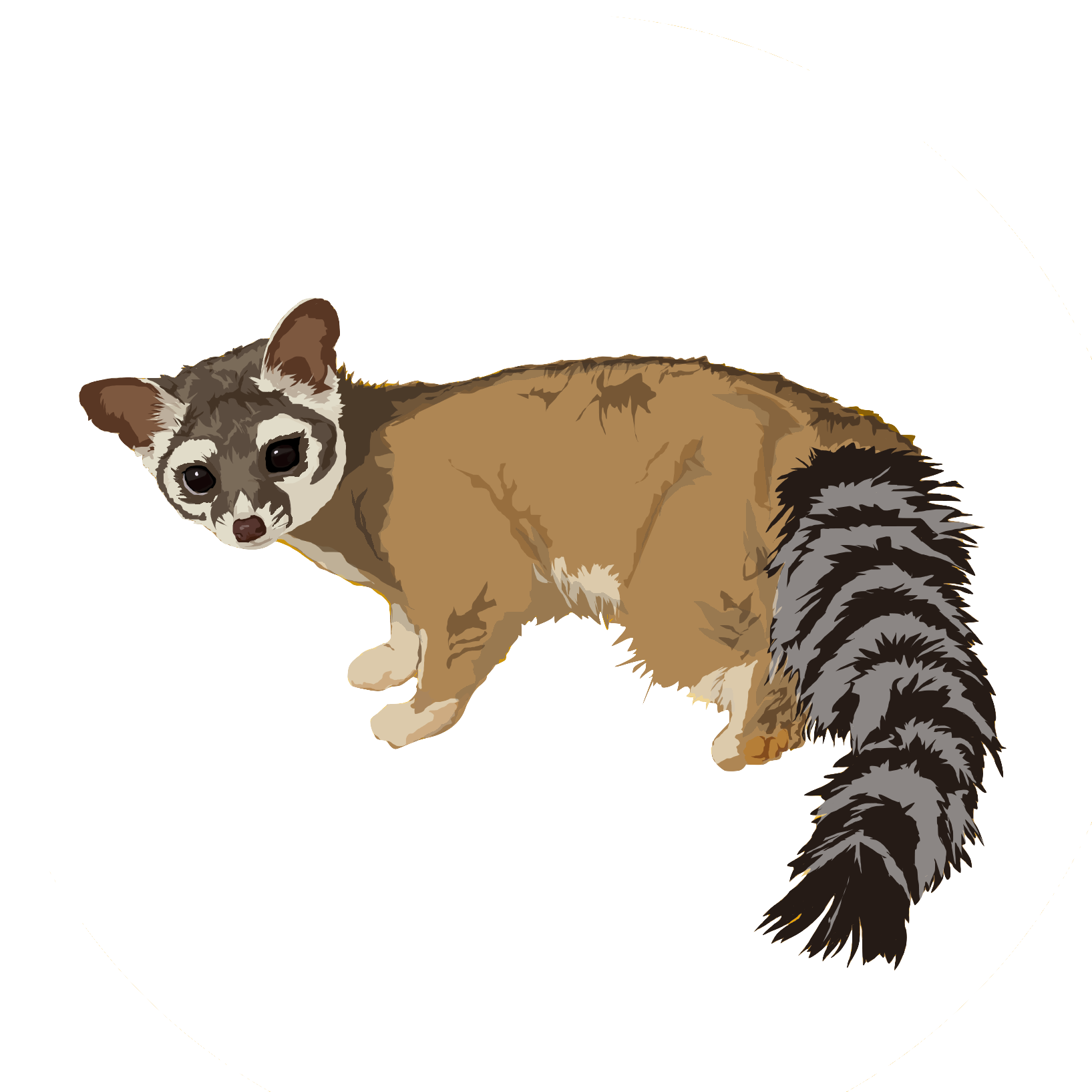
It is hard to spot a ringtail. They are solitary and sparsely populated, besides being nocturnal. They are shy creatures that live in oak forests, chaparral, rocky areas, canyons, and deserts. They also like riparian areas near rivers and streams.
Good places to see them include the Grand Canyon National Park and Carlsbad Caverns. Other sites to see them are near bird feeders, where they are trying to catch prey. Source: Nature.org
They use as dens: holes, hollow trees, logs, or spaces between boulders. They don't construct their dens, since they change them every two to three days to avoid predation. Even though ringtails are shy, it is not rare to find them close to man-made buildings.
Ring-tailed cats are nocturnal and are active during cool nights and rest in their dens in the heat of the day.

Ringtails are great acrobats and climbers, they can rotate their hind paws 180° degrees while doing vertical descents.
Their main diet consists of rabbits, insects, birds, rodents, squirrels, reptiles, and frogs. They will also eat fruit and nectar if available.
Body mass is 1.8 to 2.8 lbs. (0.82-1.3Kg). Their lenght is 12.01-16.54in (0.305-0.420m). Source: Animal Diversity
Ringtails are likely to fall prey to coyotes, owls, and bobcats.
Bassariscus sumichrasti
Bassariscus sumichrasti is also known as "Cacomistle". This is a Nahuatl word for "Half cat".
Cacomistle is found in the tropical forests South of Mexico to Panama. They are found in the middle to upper levels of the forest canopy.
Cacomistles are also omnivorous and have similar diets as Ringtails.
Ringtails and Cacomistles overlap their geographic ranges in Central America. To differentiate them Cacomistles have pointed ears, Ringtails have rounded ears. Cacomistles have tail rings that fade at the end, Ringtails have rings throughout their tails. Cacomistles have multiple cubs at birth, Ringtails have single births.
Cacomistles have an average weight of 1.9lb (0.9kg). Their length is 14-18in (0.38-0.47m)
Cacomistles' major threat is habitat degradation, deforestation, and hunting for their fur. Source: Thought.co
Nasua
Nasua are the only genus of the Procyonidae family that are diurnal.
Nasua narica: White-nosed Coati
The White-nosed Coati geographic range extends from Arizona and New Mexico, all the way to the northern regions of Colombia in South America.
They live in areas with some forest cover.
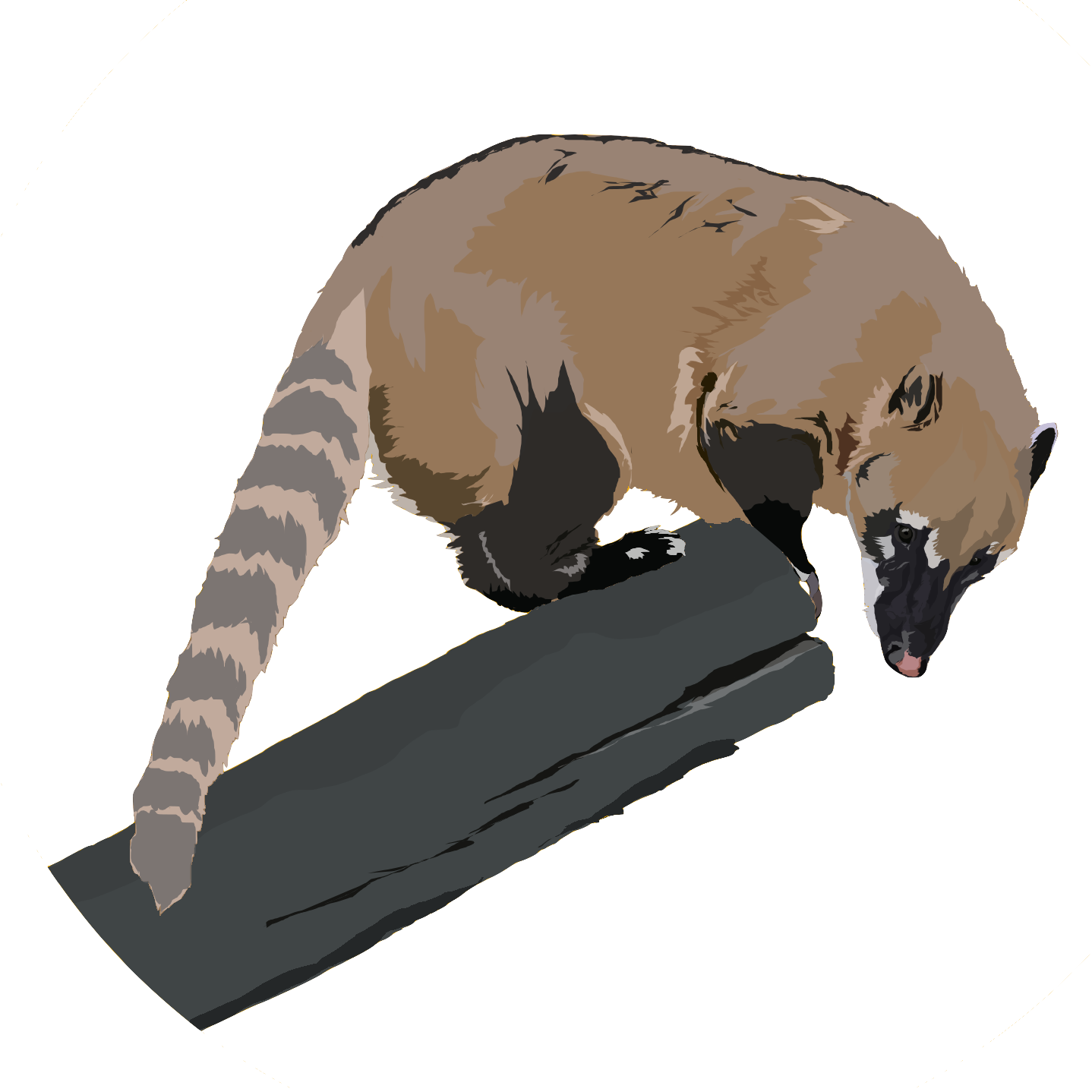
Their diet consists offruit, invertebrates, and are opportunistic hunters of vertebrates and eggs.
White-nosed coatis are medium-sized 6.6-7lb (3-7Kg). Males are much larger than females 27lbs (12.2 Kg).
Their coat color is from dark to light brown. They have a distinct white coloration around their nose.
Coatis may live in groups of 5 to 22 individuals called bands. Source: CABI
Nasua nasua: Ring Tail Coati or South American Coati
Ring-tailed coati has a wide distribution in tropical and subtropical South America.

They live in evergreen forests, semideciduous forests, cloud forests, xeric Chaco, cerrado, and dry scrub forests.
They feed on larval beetles, spiders, centipedes, scorpions, rodents, fish, crabs, and fruits.
Their average weight is 8.3lbs (3.8Kg). Their average body length is 1.4-1.7feet (0.44-0.53m) without the tail.
The pelage of their muzzles is brown or gray, the rest of their bodies show great variation in coloration, ranging from reddish, brownish to gray.
Ring-tailed coatis live in groups of 6 to 31 individuals, but adult males live alone. Source: Mammalian Species
Nasuella, Mountain Coatis, or Cusumbo
Mountains Coatis are found in the Andes mountains, from Venezuela, through Colombia, all the way to Ecuador.

Mountain coatis are found in forests and páramos above 6,561feet (2,000m).
Very little is known about their ecology, behavior, and diet. Nevertheless, it's suspected, it is similar to Nasua's diet. They are probably opportunistic foragers feeding on invertebrates and fruits.
Their bodies are half the size of Nasua, and measure about 1.18- 1.28feet (0.36-0.39m) in length, excluding their tails.
Nasuellas' have slender heads with long flexible snouts.
They have thick coarse fur that is olive to brown. Their undercoats can be blackish to white. Their tails are yellow to gray and display rings. Source: Mountain coati
Very little is known about both species, especially N. meridensis.
Bassaricyon or Olingos
Olingos are found in the forests of Central America and northern South America.

Not much is known about them because they are easily confused with the kinkajou.
They occur in lower to middle elevations, <8858feet (<2,700m), tropical and subtropical forests.
Olingos are arboreal, nocturnal, frugivorous, solitary, and have one young at a time.
Bassaricyon are small to medium-sized Procyonids of about 1.5-4.4lbs (0.7-2Kg). Their body length including their tail is between 2.1-3.2feet (0.66-0.98m). Their tails are about 1.4 feet (0.45m) in length.
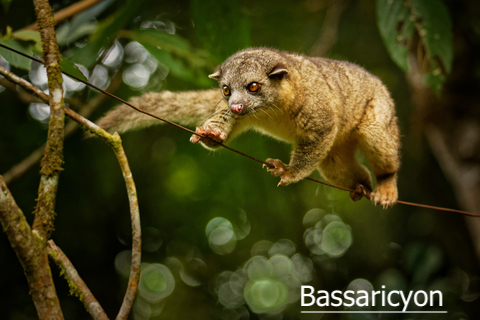
The olingos fur is thick, of brown to greyish color. Their tails have a fainted ring coloration.
Bassaricyon neblina or Olinguito is the newest recognized species and the smallest one. Bassaricyon
Potos or Kinkajou
So far only one species, Potos flavus, is recognized.
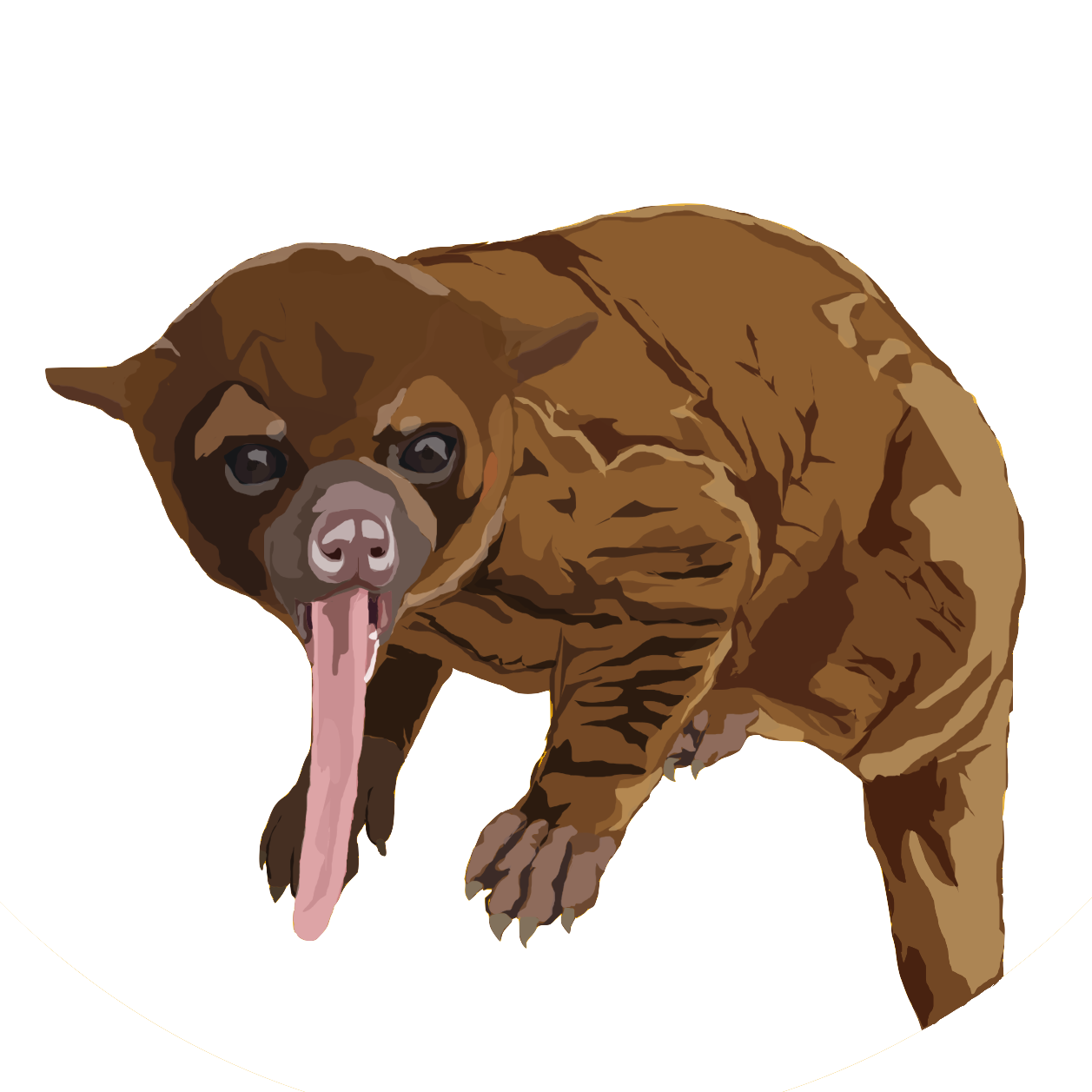
Potos live in neotropical forests from southern Mexico to Bolivia.
They prefer mature canopy forests that have not been disturbed.
Kinkajou feed mainly on fruits. They also eat leaves, nectar, and insects.
Their body weight is 3.1-10.1lbs (1.4-4.6 Kg). The male body length is 1.3-1.8ft (0.390-0.542m), females are slightly smaller. Their tails are about 1.4-1.9ft (0.420-0.570m) long.
They can climb and jump using their tails to secure and balance their bodies.
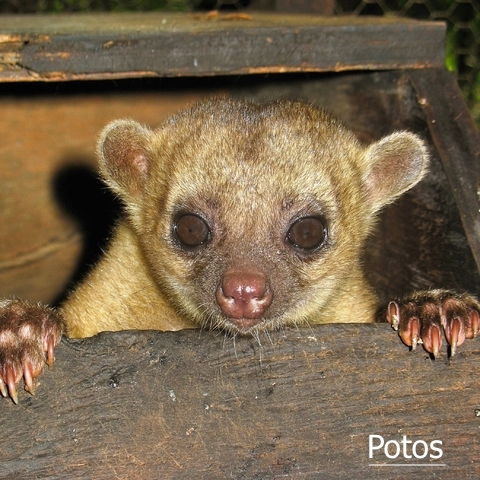
Potos have a long, thick tongue that is highly extrudable.
These are nocturnal and solitary animals but may live in small groups comprised of a female, her offspring, and 1 or 2 males.
People hunt them for their skins and to keep them as pets.
Natural predators of the Kinkajou are the puma, jaguar, ocelot, eagles, and humans. Source: San Diego Zoo.
Resources for Raccoon Family Map
This map shows an approximate geographic range of each Procyonidae genus. Many populations and their habitats are not well documented and are derived from similar species.
The shapefiles to create the map with ecoregions of the world were obtained from WWF. The shapefiles with the countries of the world were obtained from Natural Earth.
The distribution of raccoons came from Nature" and the University of Minnesota.
Ring-tailed Cat distribution was obtained from Ringtail Distribution.
Cacomistle geographic range came from IUCN Red list
Olingos distribution was derived from a bioclimatic model NCBI.
Potos distribution was obtained from IUCN Red list
White-nose Coati Nasua narica from IUCN Red List.
Coati Nasua nasua from Researchgate
Nasuella olivacea from Biodiversity Data Journal
Nasuella meridensis Smithsonian
This map will be updated with new data! To receive updates on this and more nature maps join my email list!!!!!!!
Made by Luz K. Molina with D3.js.
